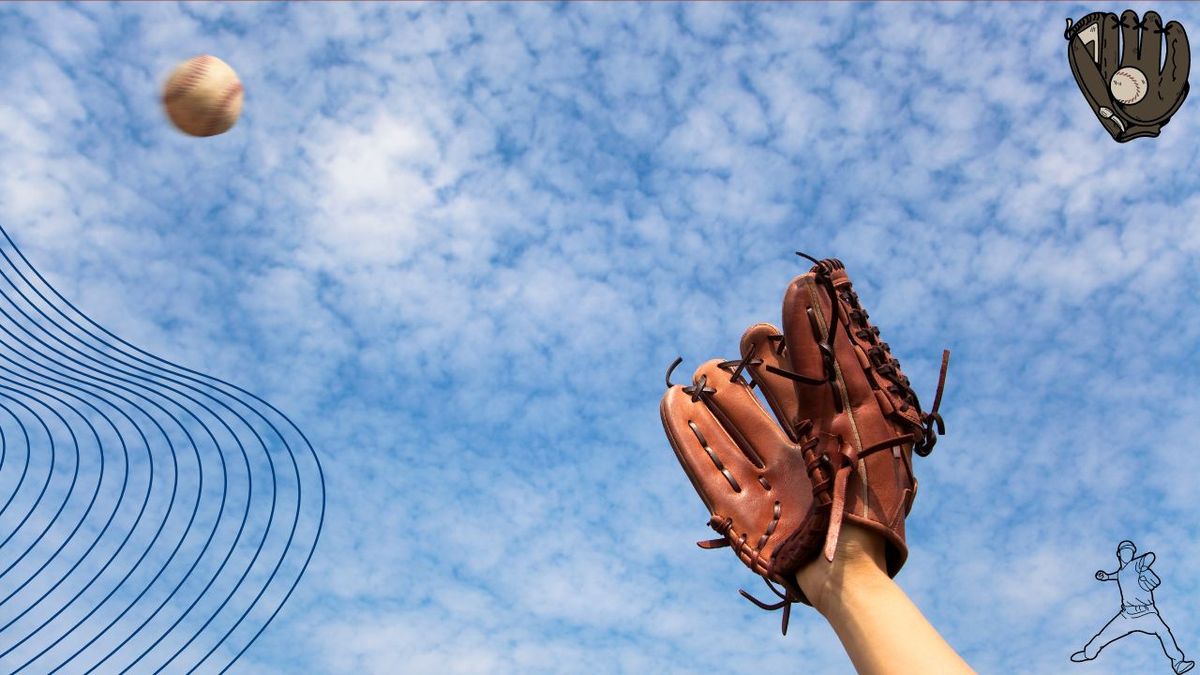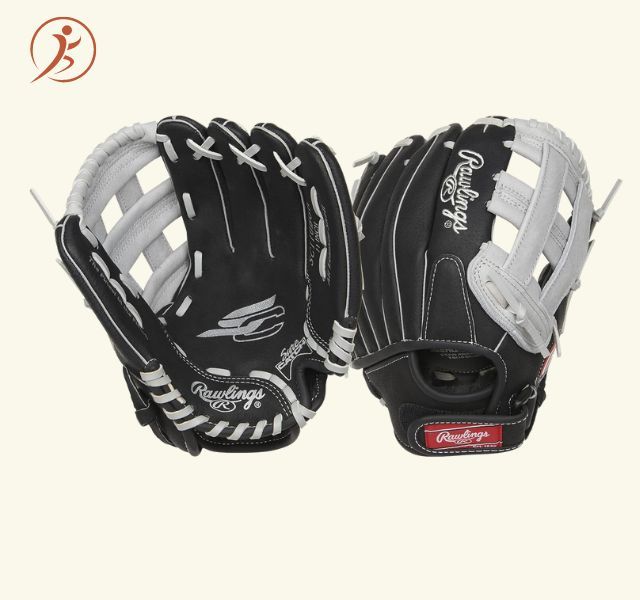Gloves of Glory: Choosing the Best Youth Baseball Glove
Unlocking the secret to your young slugger's success starts with finding the perfect youth baseball glove. Dive into our comprehensive buying guide, and equip your future star with the gear that promises to catch dreams and fuel their passion for the game.

Rookie sluggers and Little League legends, ever wondered what separates the pros from the peewees? It's all in the glove, and we've got the inside scoop! The best youth baseball glove is about to transform your diamond dreams into reality.
Reasons to Keep Reading
- Discover how the right glove can be your secret weapon on the field.
- We're dishing out the top choices for every budding ballplayer.
- Pro Tips and Tricks.
- Ever wondered about webbing, materials, and sizes? We're here to demystify it all!
So, grab your popcorn and your mitt because it's time to uncover the MVP of youth baseball gear. The best youth baseball glove is waiting to take your game to the next level!
How To Pick The Best Youth Baseball Glove?
Answer: Selecting the right youth baseball glove size is essential for a young player's comfort and performance on the field.
- Measure Hand Size: Use a flexible measuring tape or a piece of string to measure the distance from the tip of the player's index finger to the bottom of their palm (where the wrist meets the hand). Measure in inches.
- Reference Size Charts: Consult the size charts provided by the manufacturer or retailer of the baseball glove you're interested in. These charts typically correlate hand measurement to glove size.
- Consider Growth: Keep in mind that youth players are still growing. To allow room for growth, you can choose a glove size that is slightly larger than the player's current hand measurement. A quarter to half an inch of extra space is generally a good rule of thumb.
- Check Fit: Once you have the glove, ensure it fits snugly but not too tight. The player should be able to fully close their hand inside the glove, with their fingers comfortably reaching the tips of the glove's fingers.
- Position-Specific Gloves: Keep in mind that different positions may require slightly different glove sizes. Infielders may prefer a smaller glove for quicker ball transfers, while outfielders may opt for a slightly larger glove for catching fly balls.
- Consult Coaches: If the player is part of a team or league, coaches or experienced players may offer guidance on selecting the appropriate glove size for the player's age and position.
How to Choose
Size and Fit: Measure from the tip of their index finger to the bottom of their palm to find the correct glove length. Ensure the glove fits snugly but not too tight, allowing room for growth.
Position-Specific Design: Consider the player's position. Infielders, outfielders, pitchers, and catchers may benefit from gloves designed with position-specific features, such as webbing style and pocket depth.
Material: Youth gloves are typically made from leather or synthetic materials. Leather gloves offer durability and a classic feel, while synthetic gloves are often more affordable and require less break-in time.
Web Type: Different web designs (e.g., closed, open, H-web) serve different purposes. Research which web type suits your player's position and preferences for catching and ball visibility.
Brand Reputation: Brands like Rawlings, Wilson, Mizuno, and Louisville Slugger have a strong reputation in this category.
Break-In Period: Understand that some gloves may require more break-in time than others. Consider the player's patience and willingness to invest time in breaking the glove.
Budget: Determine your budget range beforehand. Youth gloves come in a variety of price points, so knowing your budget will help narrow down your options.
Age and Skill Level: Consider the player's age and skill level. Some gloves are designed specifically for younger players or beginners, while others cater to more advanced youth athletes.
Consult with Coaches: If your child is part of a team or league, consult with their coach or league officials for specific recommendations. They may have insights into suitable glove options.
Our Picks!
Rawlings REMIX Youth Baseball Glove

The Rawlings REMIX Youth Baseball Glove is a top-notch choice for young ballplayers eager to make their mark on the field. Crafted with precision and designed for youth players, this glove offers an excellent blend of comfort, performance, and durability.
Its size and fit cater specifically to younger hands, ensuring a comfortable and secure feel. With reliable materials and a stylish design, the REMIX Youth Baseball Glove is a trusted companion for budding stars, ready to elevate their game and catch success one play at a time.
Sold by Amazon
Rawlings Sure Catch Youth Baseball Glove

The Rawlings Sure Catch Youth Baseball Glove is the perfect companion for aspiring young players. Designed with young hands in mind, this glove offers a comfortable fit and straightforward break-in process. Crafted from durable materials, it ensures longevity on the field.
Its attractive design and wide range of size options make it a reliable choice for youth players at any skill level. The Rawlings Sure Catch Youth Baseball Glove is the ideal starting point for young athletes looking to develop their skills and passion for the game.
Sold by Amazon
Rawlings Players Series Youth Baseball Glove

The Rawlings Players Series Youth Baseball Glove is tailor-made for young athletes eager to shine on the diamond. Offering a comfortable fit and straightforward break-in, it's designed with young players in mind.
Constructed from high-quality materials, it ensures durability and longevity, while the various size options cater to players of different ages and skill levels. The Rawlings Players Series Youth Baseball Glove is the trusted choice for youth players looking to take their game to the next level, providing the essential tools to catch dreams and field success.
Sold by Amazon
Franklin Sports Youth Baseball Glove

The Franklin Sports Youth Baseball Glove is the ideal starting point for young players looking to conquer the baseball diamond. With its comfortable fit and easy break-in, it's designed to help kids build their skills and confidence. Crafted from quality materials, it offers durability and reliability on the field.
Available in various sizes, this glove suits players of different ages and positions, making it a dependable choice for youth athletes embarking on their baseball journey. The Franklin Sports Youth Baseball Glove is the ultimate tool to catch the spirit of the game and foster a love for baseball from an early age.
Sold by Amazon
WILSON A500 Youth Baseball Glove

The WILSON A500 Youth Baseball Glove is a superb choice for young ballplayers aiming to make their mark on the field. Engineered with youth players in mind, it provides a comfortable fit and quick break-in period.
Crafted from high-quality materials, it ensures both durability and dependable performance during play. With various sizes available, this glove accommodates players of different ages and positions.
The WILSON A500 Youth Baseball Glove is a trusted companion for aspiring athletes, helping them build their skills and passion for the game one catch at a time.
Sold by Amazon
Best Youth Baseball Glove
FAQs
Q: What size baseball glove does a 14-year-old boy need?
Answer: The ideal baseball glove size for a 14-year-old boy can vary depending on the player's position and personal preferences. However, a common glove size for a 14-year-old, who is likely playing in a youth or junior league, is typically between 11 inches and 12.5 inches.
- Infielders: Players in infield positions (e.g., second base, shortstop, third base) often prefer smaller gloves in the 11-inch to 11.75-inch range. A smaller glove allows for quicker ball transfers and better control when fielding ground balls.
- Outfielders: Outfielders usually opt for slightly larger gloves to help catch fly balls more easily. Glove sizes for outfielders typically range from 11.5 inches to 12.5 inches.
- Pitchers: Pitchers often use gloves in the 11.5-inch to 12-inch range. A slightly larger glove can help hide the ball better and offer a better grip when throwing different pitches.
- Catchers: Catchers use a specialized mitt, not a glove. The size of a catcher's mitt can vary, but it's usually around 32 inches to 34 inches in circumference.
Q: How big is a youth large glove?
Answer: A youth large baseball glove: range of 11.5" to 12". This size is suitable for older youth players, often in the intermediate or junior league age group, typically around ages 12 to 15.
However, the specific size of a youth large glove can vary slightly between manufacturers, so it's always a good idea to check the manufacturer's size chart and product specifications for the exact measurements of the glove you're interested in. This will ensure that you get a glove that fits your young player comfortably and suits their playing needs.
Q: How to buy a baseball glove for a kid?
Answer: Buying a baseball glove for a kid involves several considerations to ensure you choose the right size, fit, and type of glove.
- Determine Hand Size: Measure the child's hand from the tip of their index finger to the base of their palm (where the wrist meets the hand). This measurement will help you determine the appropriate glove size.
- Refer to Size Charts: Consult the manufacturer's or retailer's size chart to find the recommended glove size based on the child's hand measurement. Keep in mind that sizing can vary between brands, so use the size chart specific to the glove you're interested in.
- Consider Age and Position: Factor in the child's age and playing position. Younger kids generally use smaller gloves, while older kids may require larger sizes. Infielders often prefer smaller gloves (around 9 to 11 inches), while outfielders may opt for larger ones (11.5 inches and up).
- Choose the Right Webbing: The type of webbing (e.g., closed, open, H-web) can impact the glove's performance. Discuss with the child and consider the specific needs of their playing position when choosing the web style.
- Select the Material: Baseball gloves are typically made of leather or synthetic materials. Leather gloves are known for durability and a classic feel, while synthetic gloves are often more affordable and require less break-in time. Make a choice based on budget and preference.
- Try the Glove On Whenever possible, have the child try on different gloves to find the one that fits comfortably and allows for finger movement while gripping the ball. Pay attention to how the glove feels on their hand.
- Consider Glove Break-In: Keep in mind that new gloves, especially leather ones, may require a break-in period to become comfortable and flexible. Some kids may prefer gloves that are already partially broken in.
- Check for Adjustability: Some youth gloves have adjustable wrist straps or laces, allowing for a more customized fit. These can be beneficial for younger players whose hands are still growing.
